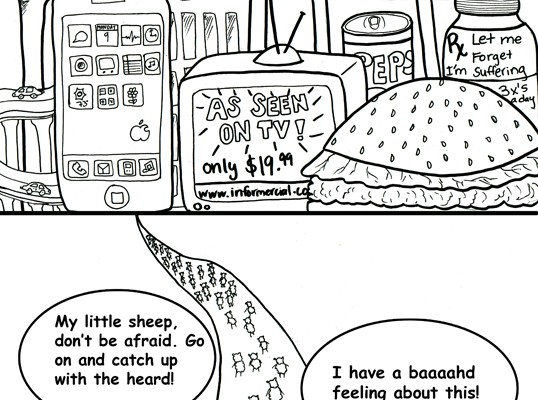I Learned Three Things From Children Today
One thing I do occasionally is teach English in preschools here in Japan. It’s a lot of fun, and I learn a lot of things. Today especially I learned three things…
1. THE MEANING OF LIFE
Yeah, from kids.
If you need a philosophy degree to learn the meaning of life, I do not really think it is the meaning of life –since life does not exist in a university library.
The most basic truth about a kid is that it doesn’t matter how fat or skinny or pretty or ugly or tall or short or light or dark or rich or poor or “cool” or “uncool” you are. If you treat a kid with love, the kid will come running to you with a smile on his or her face every single time you come around.
That is the meaning of life.
Love.
It just goes to prove that the ultimate essence of a living entity is love. We are made of it, made for it, and we need it even more than we need food, water or air. Every living being, especially when they are still new and unruined – like kids, will always come running towards love. Why? Love is the meaning of life.
The whole point of life and spiritual realization should be to seek out the purest, deepest, most sublime form of love. Philosophy and religion and spirituality is not really supposed to be about morality (dharma) or mysticism (siddhi) or knowledge (jnana) or even liberation (mukti). These things are only supports leading us towards the perfection of love – the ultimate goal, prema-bhakti: divine love.
2. LOVE HURTS
The next thing I learned is that love hurts.
OK, there is this one little boy who especially loves me. But whenever I come to the school, on that day he always gets very cranky, cries all the time and gets tired very fast. Why? Love hurts.
Now this gets me thinking… if love is the goal and meaning of life, why does it hurt?
And then I realized there are two grades of love. One is like iron, the other like gold. Both are metallic and so appear similar at a glance from a distance but the value of each is dramatically different. One kind of love is common, the other is uncommon. One is base, the other is purified.
Animals and human beings start out by developing common love. And that love hurts. Common love retains the faulty ego-centered concept of life. You see, my little friend at school, he cries when I come because he hates it when I play with any other kid. He always wants me to pick him up, play with him, talk to him, et cetera. His concept of love is self-centered. As far as he is concerned, everything about me exists only in terms of how I relate to him. He is the central figure and I am an accessory which brings him happiness due to possessing love for him. He has not learned yet that such love causes agony – even though he spends his whole day crying when I come in.
Unfortunately, only a few of us ever learn this lesson.
There is another type of love, which is purified and puts the beloved in the center and the self as an accessory for the beloved. This love is extremely blissful and practically never seen on earth in its full form. The main obstacle making it so rare is: Who is really qualified for the absolutely central position that absolutely pure love requires?
Now, people have many different ideas of who or what “God” is. All of them have some truth in them, but to me the central and most important feature of the Supreme Life is to be the one entity perfectly qualified and attractive to be the absolute center of infinitely pure love. This conception of divinity looks almost nothing like an old man on a throne, and has just about nothing to do with thunderbolts or stone tablets, nor even a meditation posture. It looks a lot more like a beautiful young boy and girl in a natural setting, surrounded by intimate friends, and intrinsically rooted into the soul of every soul. We call this conception of Godhead “Radha-Krishna”.
Common love hurts because such love results in selfish attachment to the object of love. And such attachments are the cause of all suffering – according to all my favorite philosophers, and according to all the little kids I hang out with, too. Therefore, even the joys of such love eventually become pains, and induce philosophers and housewives alike to doubt that love is really the meaning of life.
Divine love, however – radha-krishna-prema – results in selfless attachments to the object of love. Thus both the joys and tears experienced in such divinity are blossoming expansions of the most sublime spiritual bliss inherent (though in only a potential form at present) within the deep soul of both you and I.
3. JOY IS NATURAL
I watch these kids, and play with them a lot. We play with stuff like… cardboard, paper towel rolls, sometimes something fancy like a plastic ball. When I hang out with adults it is a lot different. It seems like with adults “having fun” usually means doing something elaborate or unusual like going out to karaoke, a restaurant, a movie, or whatever. But kids, they do not seem to need any props to have fun.
I think it means that the soul is ananda-maya – it is composed of bliss (an intrinsic quality of pure love). When the body and mind are very young they are soft and fresh and working great. They don’t get as badly in the way of the natural bliss in the soul.
Of course kids get bored too, but it is usually not really young kids who get bored. It is the older ones whose minds and hearts have started solidifying from prolonged exposure to object-oriented, externalized human culture. But even those kids, watch them. Look at the enthusiasm they display when they do go to the amusement park or get a new video game. They dive into it. Adults just cannot compete with their zeal. I think it is because the aging body tends to form an increasingly hard shell over the soul’s natural energy and happiness.






